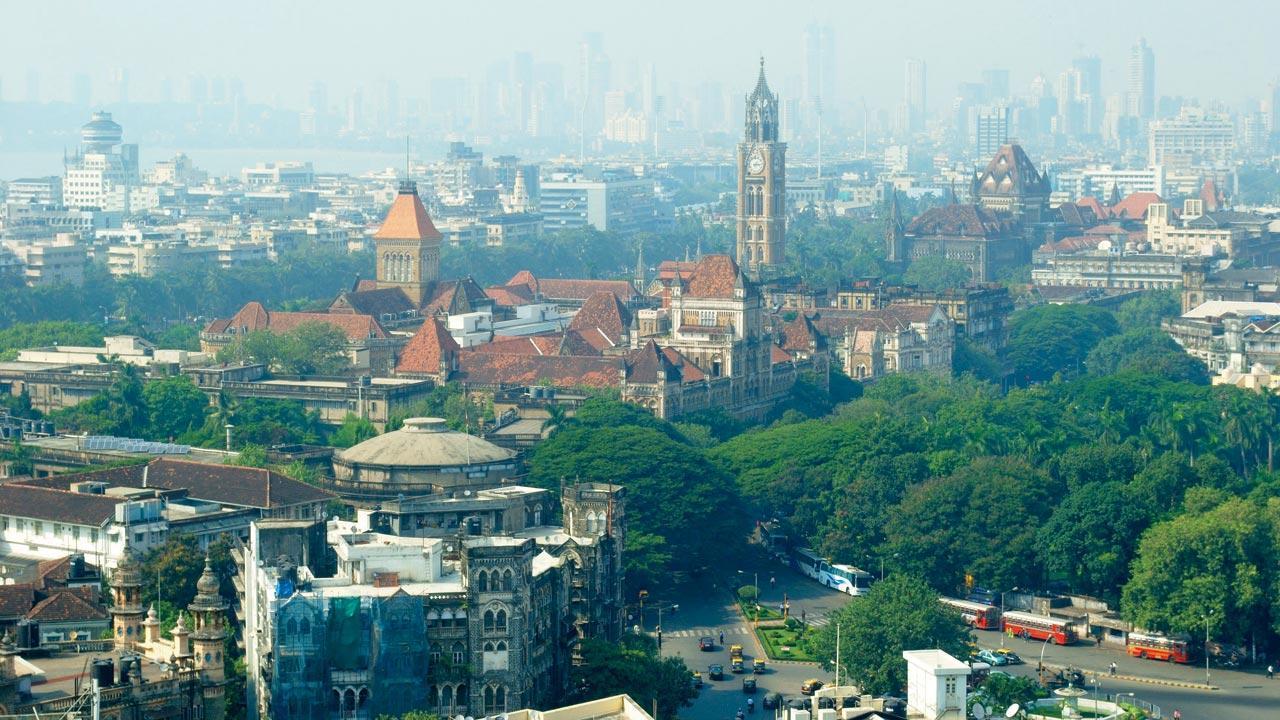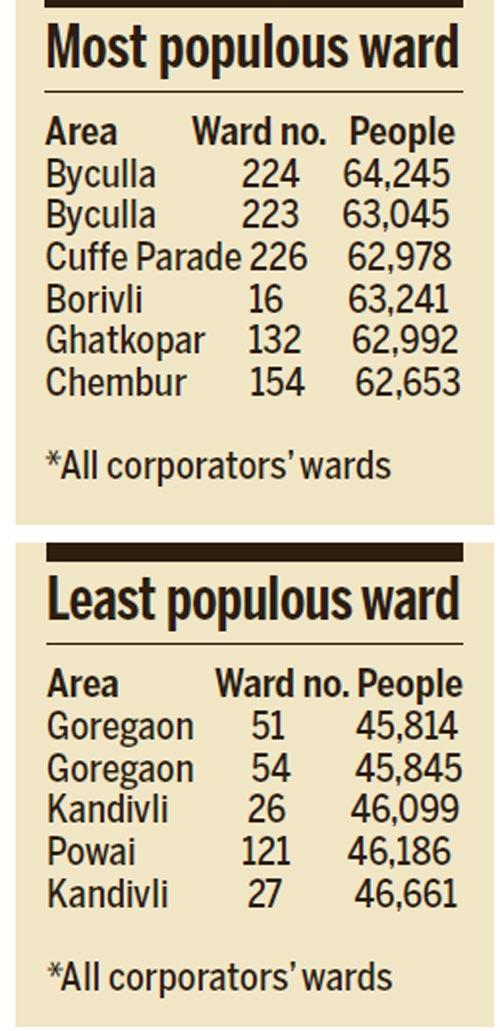The new nine corporators’ wards in the city, when added, may not align with the civic administration wards

Mumbai currently has 227 electoral and 24 administrative wards
Adding nine more corporators’ wards in Mumbai may not only affect the BMC elections, but also the administration’s work. The city currently has 227 electoral and 24 administrative wards.
ADVERTISEMENT
The electoral wards are so placed that the boundaries of a group of them are aligned within the same administrative ward. But when the number of corporators’ wards increases, the boundaries may change and one ward may fall within two administrative wards.
Also, each of the electoral wards has a population ranging from 45,000 to 65,000, and with the government adding nine more wards on the basis of population, one ward may fall within two adjacent administrative wards.
Each administrative ward has a different area and population ranging from 1.72 crore (in C ward — Girgaon, Charni Road) to 9.74 crore (in P North
ward — Malad).
The number of corporators’ wards in each administrative ward range from two (in B) to 18 (in P North). All the corporators’ wards fall within the same administrative area, and all the locals and corporators have to visit one ward office for their civic issues. But all this may change after nine new wards are added across the city, which will change the geography of almost all wards.
“Till 2012, boundaries of the corporators’ wards were not aligned to that of the administrative wards. Corporators and people had to visit two separate wards for civic work and the system was complicated. After demand from local corporators, the delimitation team arranged the 227 corporators’ wards in such a way that [a group of them] are placed within one admin ward,” said Bhalchandra Shirsat, spokesperson of the BJP. He added that it means all seven corporators’ wards in F South fall within the same administrative jurisdiction.
While doing so, despite the average population of each ward should be between 50,000 to 55,000 there are at least 40 wards with more than 60,000 population and almost the same number of wards have less than 50,000 population. The extreme level population occurred in wards which have small areas. Like, the population in the two electoral wards (223 and 224) of B ward is 63,045 and 64,245, respectively, whereas it’s 45,000 in the wards in Goregaon.
“The wards have to be the same size for balanced development. It can be achieved by restructuring of wards with equal distribution of population within an administrative ward only,” said Ravi Raja, group leader of the Congress.
“We haven’t got any information about it from the government and we cannot comment on this right now,” said an administrative officer of the BMC.

 Subscribe today by clicking the link and stay updated with the latest news!" Click here!
Subscribe today by clicking the link and stay updated with the latest news!" Click here!







